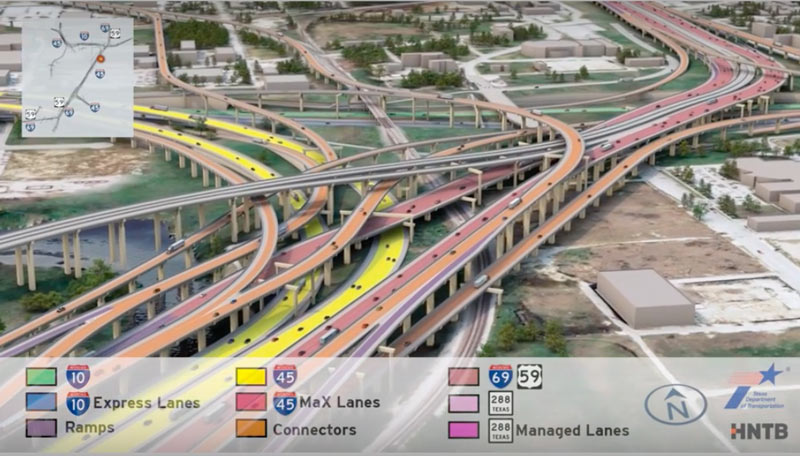This time it’s different, more or less.
The region’s largest looming highway project – a massive rebuild of Interstate 45 from the Sam Houston Tollway to downtown Houston – has a lot of people looking into the rear-view mirror, pressing officials to make sure the job does not come with some of the downsides of its predecessors.
Even with the worries, however, the mega-project planned by the Texas Department of Transportation hasn’t been like many others, from the time it has taken to develop to the types of new lanes proposed.
Though often characterized as a bureaucratic behemoth, the state transportation agency has gone to unprecedented levels of public engagement the past three years, taking the designs for adding two managed lanes in each direction to public meetings, community groups, even sitting down with interested stakeholders for one-on-one meetings.
“We’re doing a lot of listening,” said Quincy Allen, district director for TxDOT. “We want to be a good partner, with others, in every sense of the word.”
[…]
Though the goal of many of the proposed changes is to tear down barriers, notably the Pierce Elevated, previous Houston freeway projects around downtown – including Interstate 10, Loop 610 and U.S. 59 – have left some neighborhoods cleaved. The north side, also divided by Buffalo Bayou, has not enjoyed downtown-centered investment as much as Midtown and the Fourth Ward. Bellaire residents and leaders still have bad feelings over how Loop 610 cut through the small city.
Drivers do not want that to happen with the I-45 project, which officials have called a generational project that commuters still could be using 40 years from now. Cutting off neighborhoods or restricting transit options could have devastating consequences.
“The easiest way to destroy a neighborhood is to divide it,” said Seth Hopkins, who lives at Emancipation and Polk, where residents worry they will lose easy access to downtown if Polk and other streets are cut off by the freeway.
There’s a lot more, so go read the rest. I’ll agree that TxDOT has done a pretty good job taking its time and listening to feedback about the project. I suspect one difference between this and the Katy Freeway widening of 15 years ago is that project had a lot of pressure, from John Culberson and the Harris County Toll Road Authority, to get it done, while the pressure in this one is to slow down and not break anything. But for all that, at some point ground will be broken and people who live and work in the targeted area on the east side of downtown will be affected in ways we don’t know yet. It’s going to be a huge mess, one that may take a decade from start to finish. I appreciate what TxDOT is doing now, but there’s only so much that can be done to soften the impact of this kind of project.


As someone who travels from the Heights to the Med Ctr twice a day across the elevated portion of I45, can someone, anyone, explain to me how or why this needs to take place ? Are there frequent delays, sure, but you could say that about the 16 lane I-10 westbound racetrack at the Beltway. Just like in Jurassic Park, nature [people] find a way to navigate around that which slows them down.
@CL, lots of folks think that their ability to go from Downtown to Midtown without crossing under the Pierce is far more important than you being able to get to work easily. In their view, we should all live within walking distance of the office, and not have a car.